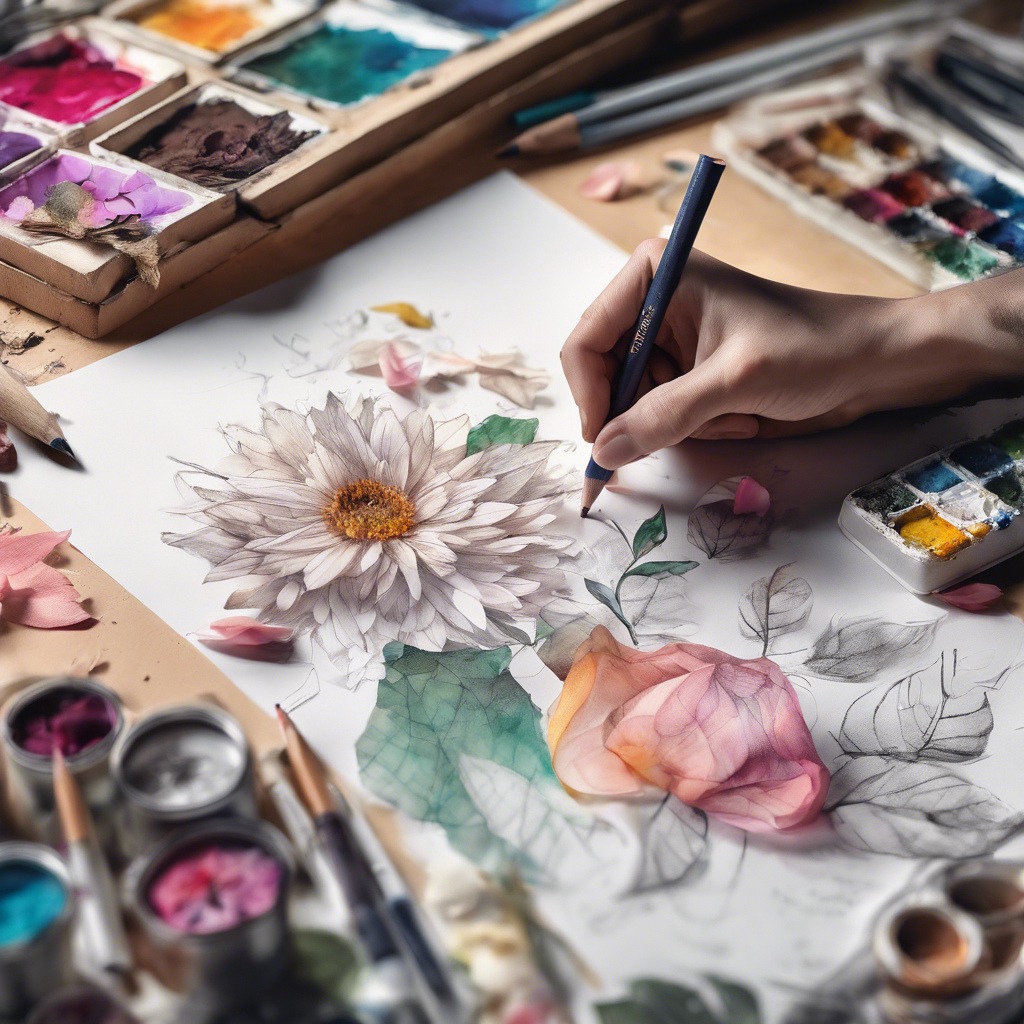Drawing is a skill that many wish to master, but often feel intimidated by. The good news is, anyone can learn to draw with practice, patience, and the right guidance. Whether you’re a complete beginner or looking to refine your skills, this guide will walk you through the fundamental steps to becoming a proficient artist.
1. Understanding the Basics
a. Tools and Materials
Before you start drawing, it’s essential to gather the right tools. Here’s a list of basic supplies you will need:
Pencils: A range of pencils from 2H to 6B for different shading effects.
Erasers: A kneaded eraser and a regular rubber eraser.
Paper: Sketchbooks or loose sheets of drawing paper.
Sharpener: To keep your pencils in good shape.
Ruler: For drawing straight lines and measuring proportions.
b. Basic Shapes
Everything you see around you can be broken down into basic shapes such as circles, squares, rectangles, and triangles. Learning to identify and draw these shapes is crucial. Start by practicing these shapes until you can draw them effortlessly.
2. Learning to See
Drawing is as much about seeing as it is about creating marks on paper. Here are some exercises to improve your observation skills:
a. Contour Drawing
Contour drawing involves drawing the outline of a subject without lifting your pencil from the paper. This exercise helps in improving hand-eye coordination and understanding the form of objects.
b. Negative Space
Negative space is the area around and between the subject of an image. By focusing on drawing the negative space, you can create a more accurate representation of the subject.
3. Proportion and Perspective
a. Proportion
Proportion refers to the relationship between the sizes of different parts of your subject. When drawing a human figure, for example, the head is usually about one-eighth of the total height. Practice drawing simple objects and gradually move to more complex subjects, always paying attention to their proportions.
b. Perspective
Perspective is what gives a drawing depth and dimension. There are two main types of perspective:
One-Point Perspective: Used for subjects viewed from the front, where parallel lines converge at a single vanishing point on the horizon.
Two-Point Perspective: Used for subjects viewed at an angle, where lines converge at two vanishing points on the horizon.
4. Shading and Textures
Shading adds depth and realism to your drawings. Here are some techniques to practice:
a. Hatching
Hatching involves drawing closely spaced parallel lines to create shade. The closer the lines, the darker the area will appear.
b. Cross-Hatching
Cross-hatching is similar to hatching but involves drawing another set of parallel lines intersecting the first set. This technique creates a richer texture and darker tones.
c. Stippling
Stippling uses dots to create shading and texture. The closer and more numerous the dots, the darker the area appears.
d. Blending
Blending smooths out the transitions between different tones. You can use a blending stump, tissue, or even your finger to blend pencil marks.
5. Drawing from Life
Drawing from life, or observational drawing, is one of the best ways to improve your skills. Here are some tips:
a. Start Simple
Begin with simple objects such as fruits, bottles, or plants. Focus on capturing their basic shapes, proportions, and shadows.
b. Use a Viewfinder
A viewfinder is a simple tool made from a piece of cardboard with a rectangular hole cut in the middle. It helps you focus on a specific area of your subject and improve your composition.
c. Take Your Time
Don’t rush your drawings. Take the time to observe your subject carefully and make deliberate marks on your paper.
6. Practice, Practice, Practice
Like any other skill, drawing improves with practice. Here are some ways to keep practicing:
a. Keep a Sketchbook
Carry a sketchbook with you and make a habit of drawing every day. Sketch anything that catches your eye, from people on the bus to the view from your window.
b. Set Challenges
Set yourself drawing challenges to keep things interesting. For example, draw 100 hands in a month, or fill a sketchbook in a week.
c. Take Classes
Consider taking a drawing class or workshop. Learning from an experienced instructor can provide you with valuable feedback and new techniques.
7. Exploring Different Styles
As you become more comfortable with drawing, start exploring different styles and mediums. Here are a few to try:
a. Realism
Realism focuses on creating lifelike representations of subjects. It requires a keen eye for detail and a lot of practice.
b. Cartooning
Cartooning involves simplifying subjects and exaggerating certain features. It’s a fun and expressive style that allows for a lot of creativity.
c. Abstract
Abstract drawing breaks away from realistic representations and focuses on shapes, colors, and lines. It’s a great way to experiment with different techniques and express your emotions.
8. Seeking Feedback
Don’t be afraid to seek feedback on your work. Join online forums, social media groups, or local art clubs where you can share your drawings and get constructive criticism. Learning from others and understanding different perspectives can greatly enhance your skills.
Conclusion
Drawing is a rewarding and fulfilling activity that anyone can learn with dedication and practice. Remember to start with the basics, improve your observation skills, understand proportion and perspective, practice shading and textures, draw from life, and most importantly, keep practicing. Don’t be afraid to explore different styles and seek feedback to grow as an artist. Happy drawing!



